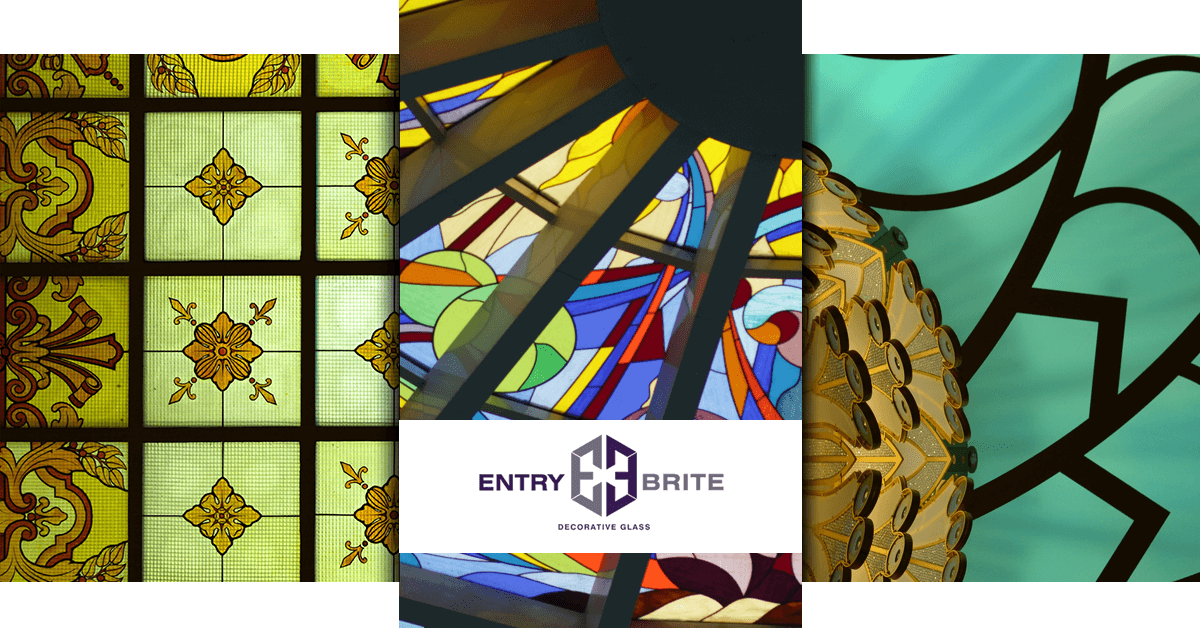Do you have a stained glass front door or windows in your Las Vegas home? There is a good chance that one or more of the panels in the piece has a texture to it. It’s a common design element in stained glass and helps to obscure the view, making it ideal for use in windows and doors of private residences. Knowing what those different textures are called can be beneficial to the owner; it will be a lot easier to deal with repairs or maintenance when you know what to call it! We’ve put together a brief guide on the textured glass used to create doors and windows to give you a better idea of what they are called and maybe learn a bit more about the work that goes into creating it.
Like the idea of incorporating some of these textures into your doors or windows? Get in touch with our team and let’s talk about what we can do for you!
7 DIFFERENT TYPES OF TEXTURED GLASS
Glue Chip
Glue chip glass is aptly named. The process of creating it involves coating the glass with glue and then baking it. As the glue bakes, it flakes off and leaves a mottled texture behind. The result is a glass that has a sort of wavy, leaf-like pattern on its surface.
Bevels
Bevels aren’t so much a texture as they are a style of glass, but they are so often used in stained glass front doors that we had to include it on the list. Beveled glass is created when the glass is cut, sanded, and polished at an angle other than 90 degrees. It’s often used around the edge of the glass piece.
Crackle
Crackle glass mimics the appearance of antique glass. When the glass is being made, it’s dipped into a liquid that causes the surface of the glass to take on the cracked appearance throughout. It almost looks like a reptile’s skin.
English Muffle
This is a glass that you’ll very often find in stained glass from the Victorian era, so from the late part of the 1800’s to the early part of the 1900’s. The English Muffle is a kind of ripple on the surface of the glass.
Pebble
Pebble glass is so called because it looks like a lot of small, round pebbles were placed on the surface of the glass when it was created and left indentations behind.
Seedy
Seedy glass might look like it’s been made with seeds captured inside, but those seeds are actually air bubbles. The effect is a gently textured appearance that is actually smooth to the touch.
Waterglass
Waterglass is a dramatic textured glass that’s known for its beauty. The glass is gently stretched as it’s being created. The result are ripples and waves on the surface that make it look a lot like water. Images behind waterglass can look like they are actually underwater.
LOOKING FOR BEAUTIFUL TEXTURED STAINED GLASS FOR YOUR DOOR?
These are just seven of the options available for your front door. There are so many others out there! Take a moment to browse through our online gallery to learn more about how we’re putting beautiful textured and stained glass to work at Las Vegas doors. The difference it makes is amazing; these doors bring a lot of character and class to the homes they are in. If you’d like to see what textured glass can do to elevate the look of your entryway, get in touch with our team. We’d be happy to give you a free, no-obligation consultation on an entryway remodel for your home. Give us a call or contact us through our website today.

